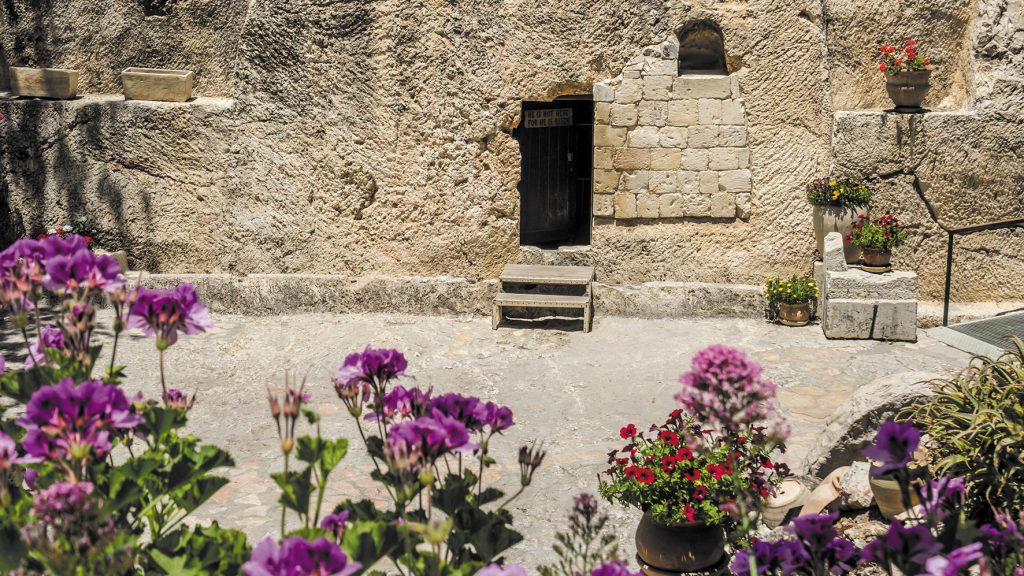Jesus’ Jerusalem – The History of Jerusalem—Part 4
He was born a Judean but raised a Galilean. The first thirty years of His life were spent in an obscure village with less than three hundred inhabitants. Because of Him, His hometown has grown to 78,000 today. Regarding His famous ministry, it was also Galilean, based by the shore of what is now the most famous body of water in the world, the Sea of Galilee.
Yet our King, Saviour, and Lord—Jesus of Nazareth—had an appointment in Jerusalem. Indeed, He had several, but the most important one occurred at the end of His natural life. While His visits to Jerusalem were occasional, they were also notable.
These visits started when Jesus was eight days old: the time of His circumcision and then presentation to the Lord at the temple in Jerusalem. A simple sacrifice was offered of a pair of turtle doves or two young pigeons. While the sacrificial side of the visit was routine, some extraordinary things happened. A man named Simeon was told that he would not die before seeing the Lord’s Christ with his own eyes. He prophesied that the infant would cause the fall and rising again of many in Israel (Luke 2:21-35).
After Simeon came an old prophetess Anna, daughter of Phanuel, from the obscure tribe of Asher. She pointed to this same infant as the means of redemption in Jerusalem—which was accomplished nearly thirty-three years later.
Jesus’ next recorded visit was when He was twelve years old. His family took Him to Jerusalem for the feast of Passover. When they returned to Nazareth, unbeknown to them, He stayed behind with the theological doctors, listening to them and asking questions. He astonished everyone with his words. Then the curtain descends between Jesus and Jerusalem, and we hear nothing more for eighteen years. At the age of thirty, at the Jordan River, the Triune God—The Heavenly Father, Jesus, and the Holy Spirit made their visible public earthly debut at the site of John the Baptist’s ministry.
Remember that much of Jesus’ public ministry was done along the western, northwestern, and northern shore of the Sea of Galilee, from Magdala on the mid-western shore to Bethsaida on the Northeast corner of the lake. The eastern shore was Gentile country; hence, the herding of swine and the deliverance of the Gadarene demoniac. The southern half of the western shore was the area of Tiberias. Built by ‘that fox’ Herod Antipas on an abandoned cemetery, good Jews refused to live in Tiberias. There is no record of Jesus visiting the city, despite its proximity to His ministry headquarters.
“They viewed it as a violation of the Sabbath”
When Jesus did miracles in Galilee, they were universally celebrated and acclaimed. Duplicate the miracles in Jerusalem, and the Lord received, at best, a mixed response. There were those who reacted just like the people of Galilee, yet others became resentful, hardened, and hateful. His popularity in Jerusalem was not helped by the cleansing of the temple at the early part of His ministry (John 2:13-22), with another round after His Palm Sunday entry into the sacred precincts just days before His crucifixion.
Another example of the mixed response to miracles occurred in the sheep market at the pool of Bethesda (John 5), where a man with an infirmity of thirty-eight years. Jesus came to him and commanded that he rise, take up his bed, and walk. Immediately, he was healed and was able to comply. Only one problem: it was the Sabbath day. The Jewish elite was highly offended, not impressed, by this powerful miracle. They viewed it as a violation of the Sabbath. The healed man went out of his way to tell them that his healer was Jesus; from that point, they persecuted the Lord until the time of His death. A similarly mixed response happened when Jesus healed the blind man at the Pool of Siloam; the whole of John 9 is devoted to this miracle and the controversy surrounding it.
This mixed response, love-hate, double-minded attitude by Jerusalem towards Jesus was fully manifested in the last week of His life. During the Palm Sunday entry into the city, the crowd rapturously welcomed him. They called Him the ‘Son of David,’ which was tantamount to recognising Him as the Messiah—the Anointed One—and coming king. This was a threat to the current ruling Jewish religious establishment and the Roman occupying authorities. Jesus took time from the adulation to view the city of Jerusalem and weep, knowing its celebration of Him was brief, its soon-coming rejection of Him deadly, and its own destruction by Rome was a few years away.
A second cleansing of the temple and strife-riddled arguments with the scribes and Pharisees, the communal temperature was raised to boiling point. His enemies would not rest until He was destroyed. Within a few short days, Jesus would be betrayed, arrested, tried, convicted, mocked, humiliated, then crucified and buried in a new but borrowed tomb. Three days later, He rose from the dead. The city of His crucifixion and ratification of the New Covenant in His blood also became the dissemination centre of the glorious gospel of salvation to the ends of the earth. As it says in Luke 24:47: And that repentance and remission of sins should be preached in his name among all nations, beginning at Jerusalem. So, from the city where it all began, in the fullness of time, He will return.
To be continued.





